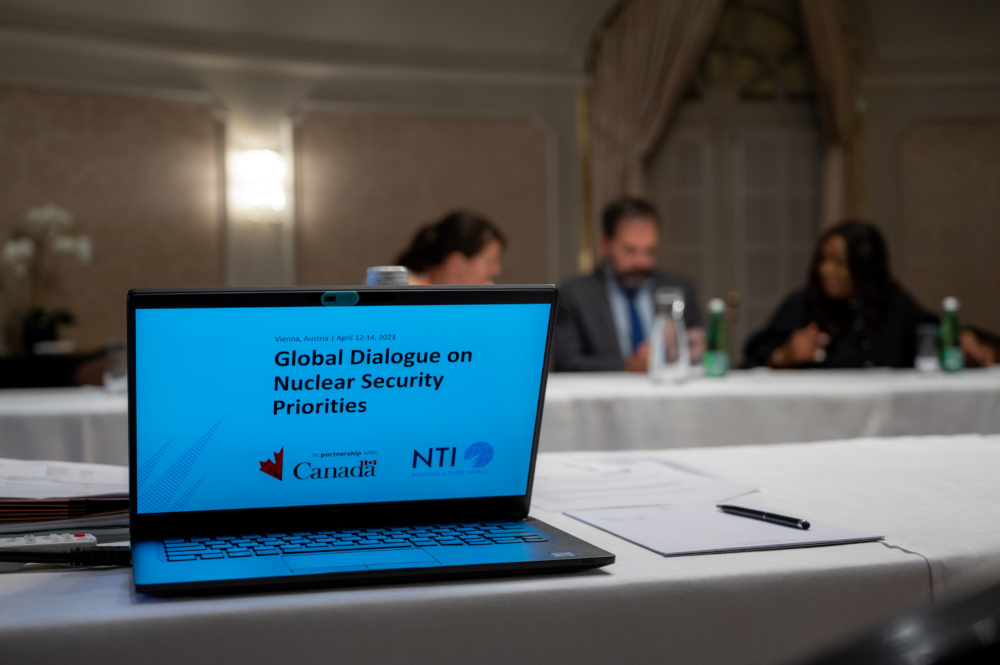
Discussion Paper: Strengthening the Security of Plutonium
Plutonium (Pu) and high enriched uranium (HEU) are often discussed together because they are both used in peaceful applications and usable for military purposes. Either separated Pu or HEU can constitute the essential nuclear explosive element of a nuclear weapon, and the international nonproliferation regime considers both as “sensitive material,” that used for peaceful purposes should be subject to stringent export controls and international safeguards.
Minimizing the use of HEU has been recognized repeatedly as a globally shared objective, including by the Nuclear Security Summits (NSS), given that HEU can be readily usable in a nuclear weapon and is geographically widespread, in some cases in states and at facilities with poor security policies and practices. As a result, thousands of kilograms of HEU used in civil facilities have been down-blended and the number of states and facilities with HEU has been reduced significantly.
States signing on to the 2014 Hague NSS communiqué encouraged “States to minimize their stocks of HEU and to keep their stockpile of separated plutonium to the minimum level, both as consistent with national requirements.” However, the NSS and associated events (e.g., the Nuclear Industry Summits) have not specifically addressed the security of plutonium in either their broader policy objectives or specific initiatives or “gift baskets.”
While states use weapons-grade (WG) plutonium (with 90/97% Pu 239) resulting from a very low fuel burn-up in reactors in their nuclear weapons programs, reactor-grade (RG) plutonium, despite posing additional technical challenges, is deemed to be weapons-usable by potential proliferators or terrorist groups interested in even low yield or less reliable nuclear devices. Irradiated plutonium contained in spent fuel could also be used in radiological dispersal devices (RDDs), although for practical reasons, other radiological sources would be a much preferred terrorist path.
The responsibility for nuclear security, including for plutonium, rests at the national and operational level, and policy decisions on the use of nuclear energy and fuel cycle options belong to each state. However, a strengthened global political consensus regarding plutonium is needed. Increased international cooperation can contribute to enhanced security worldwide in the near term with a longer-term goal of improved security through the responsible management of plutonium. The high-level policy goal that might be pursued in the context of the 2016 NSS is to minimize inventories of separated plutonium and pursue policies of “no new separation without a credible re-use plan within a reasonable timeframe.”
Therefore, keeping in mind the main terrorism and proliferation threats posed by plutonium, the 2016 NSS could explore ways to minimize inventories of separated plutonium and pursue policies to optimize the path forward to such minimization efforts. This goal would require states to draw down existing inventories toward minimal requirements for civil energy use and to balance any future plutonium separation with elimination or consumption of equivalent or greater amounts of separated plutonium. Each individual government should determine how best to achieve this goal. This approach would be complementary to the continued application of physical protection measures and to efforts to minimize the number and location of reprocessing facilities worldwide.
Stay Informed
Sign up for our newsletter to get the latest on nuclear and biological threats.
More on

Fostering Nuclear Security Leadership and Innovation
Lessons Learned from 10 Years of the Global Dialogue on Nuclear Security Priorities
Global Dialogue on Nuclear Security Priorities: Building an Effective Global Nuclear Security System
The Nuclear Threat Initiative has convened government officials, experts, representatives from international organizations, and industry leaders since 2012 to define what a truly comprehensive and effective global nuclear security system would look like and has developed related recommendations. This paper is the culmination of this work and lays out a vision for strengthening the global nuclear security system and the steps needed to achieve it, including after the summit process ends.
White Paper: Challenges and Opportunities for Strengthening the Global Nuclear Security System
This paper identifies key elements of the existing nuclear security system, reveals gaps in the existing system, and describes the characteristics of a strengthened global nuclear security system.
